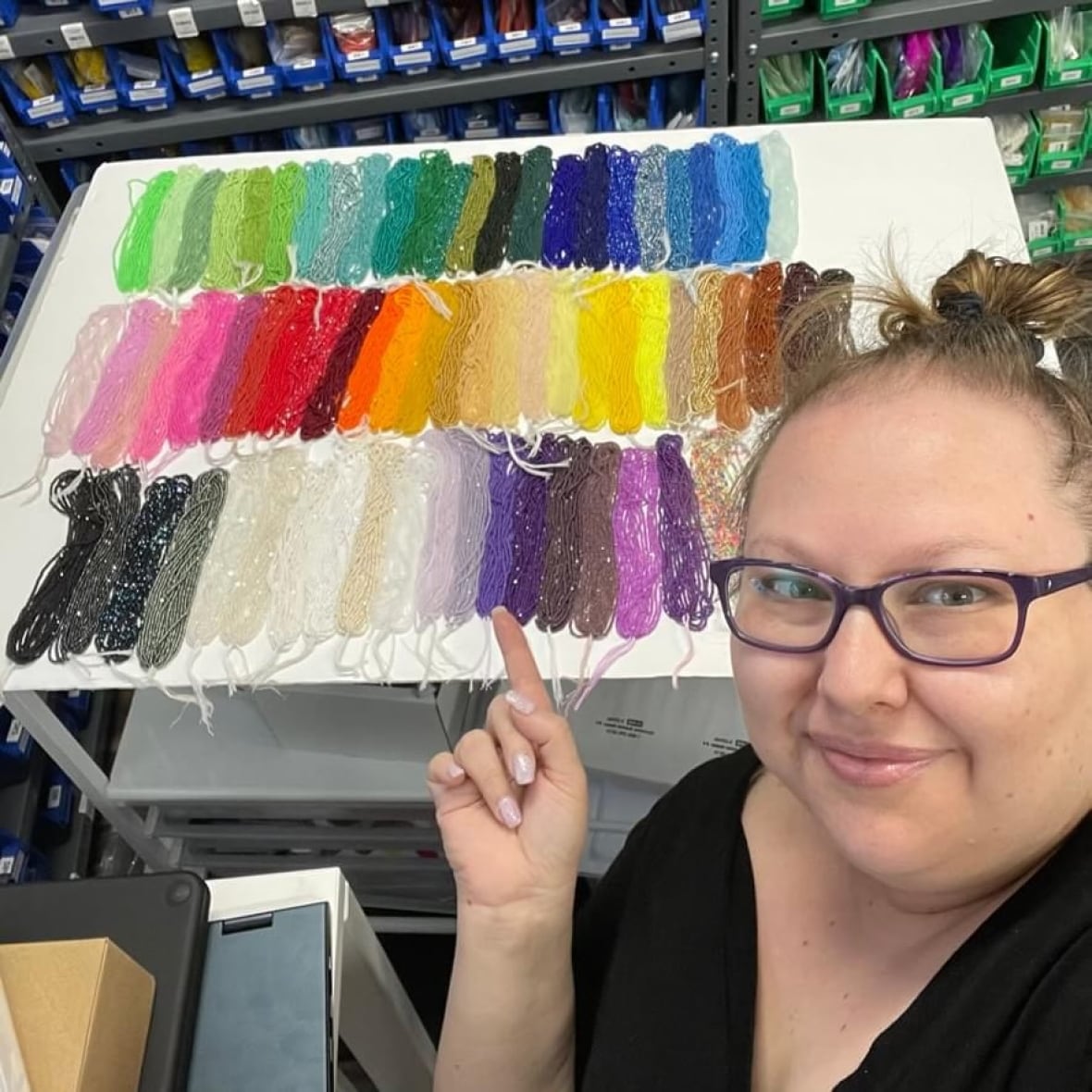Doug Ford wears it, Russ refuses it: Why gifts of beaded medallions are sparking debate
Some wonder if non-Indigenous celebrities understand the significance of beadwork

Beading a medallion is meticulous work and can take days for even skilled beaders to complete, so when non-Indigenous people are gifted these cultural adornments, some First Nations people question if they really understand their value.
Ontario Premier Doug Ford's latest accessory, a beaded medallion given to him by the Ontario Native Women's Association at a meeting last week between premiers and national Indigenous organizations, has sparked debate online.
The gift came just weeks after Ford made inflammatory comments that he has treated First Nations people "like gold" and that they "can't just keep coming hat in hand all the time to the government" and need to be able to take care of themselves. He apologized for his comments the next day.
A statement from ONWA said the gift, given to Ford by their CEO Cora McGuire-Cyrette, was intended as a reminder of the leadership of Indigenous women and importance of their voices at decision-making tables.
Ford's medallion hasn't been the only one getting attention this month. After a concert in Toronto, Italian-American rapper Russ came under fire for refusing a medallion while he performed.
"What do you want me to do? Stop the whole show," he can be heard saying on stage in a video shared on social media.
"I'm trying to perform and you're spending the whole show just trying to get me to look at this dumb s--t you're holding up."
After, he took to TikTok and said a fan was using the guise of a medical emergency to call attention to the medallion, after his show had already been stopped once due to an actual medical emergency, and that he refused it on those grounds.
This incident ignited discussion online about the cultural significance of medallions and whether their value is appreciated or understood by non-Indigenous celebrities and politicians.
Kerry Benjoe, editor-in-chief of EFN Media and a Saulteaux journalist from Muscowpetung First Nation in Saskatchewan, worries medallions aren't respected the way they should be by recipients.
"When somebody takes the time to make that piece for you, they're giving a piece of themselves to you and I don't think people from outside the Indigenous community fully understand," Benjoe said.
"They don't understand the historical significance of a lot of this artwork. A lot of skill goes into it, a lot of thought."
For Benjoe, medallions also carry ancestral weight, because artistic knowledge is passed down across generations.
She said ultimately it is up to beaders to decide to gift their beadwork or not but she wants to see the pieces being honoured the way they should be.
Gifts to build relationships
Mariah Battiste, a Mi'kmaw beader and owner of Sundaylace Creations in Eskasoni First Nation in Nova Scotia, has gifted many medallions, including to her brother Jaime Battiste, the first Mi'kmaw MP elected to the House of Commons.
She said he wears them as a symbol of his identity and a reminder of his commitment to his people.
Beading to gift is part of her cultural identity, she said, rooted in teachings of reciprocity and sacrifice.

She said Mi'kmaq give gifts not as a transactional duty but to show generosity and build relationships, a tradition since before the signing of the treaties.
"The [gift] giver is offering a little bit of our spirit, a little bit of our friendship, extending trust," said Battiste.
She acknowledges the confusion some may have around gifting medallions to controversial politicians, especially those outside of the community, but to her it's about building bridges.
In this way, she said she understands how, despite his recent comments, the ONWA gave Ford a medallion as a symbolic gesture to repair relationships.

"Are we giving gifts to people we dislike… or are we trying to relationship-build with people who don't understand us and making that bridge using a sort of ceremony?" she asked.
Battiste beaded a medallion for Prime Minister Mark Carney in June, which her brother gifted to him on Canada Day. She said she doesn't expect for him to wear it in the same way her brother does, but it's a symbol for building understanding with the new prime minister.
Jocelyn Marshall, a Mi'kmaw beader from Membertou First Nation in Nova Scotia, said she has a casual approach to gifting her beadwork.
A few years ago, her son encouraged her to bead a medallion for rapper Ice Cube, which he then tossed on stage at the end of a concert.
"To me, it's just something fun to do, and I mean, if he got it, he got it," said Marshall.
"If he didn't, oh well…. I had nothing to lose."
To her surprise, she received photos of the rapper wearing her beadwork backstage later that night.
Marshall said she felt happy to see him wearing it and later see it on his Instagram, but for her it wasn't about the recognition. She said just knowing someone was enjoying her art was enough.
"Beadwork doesn't have to line up with anybody else's values but your own when you're a beader," said Marshall.
"I like to say, 'I bead what I want, when I want.'"

